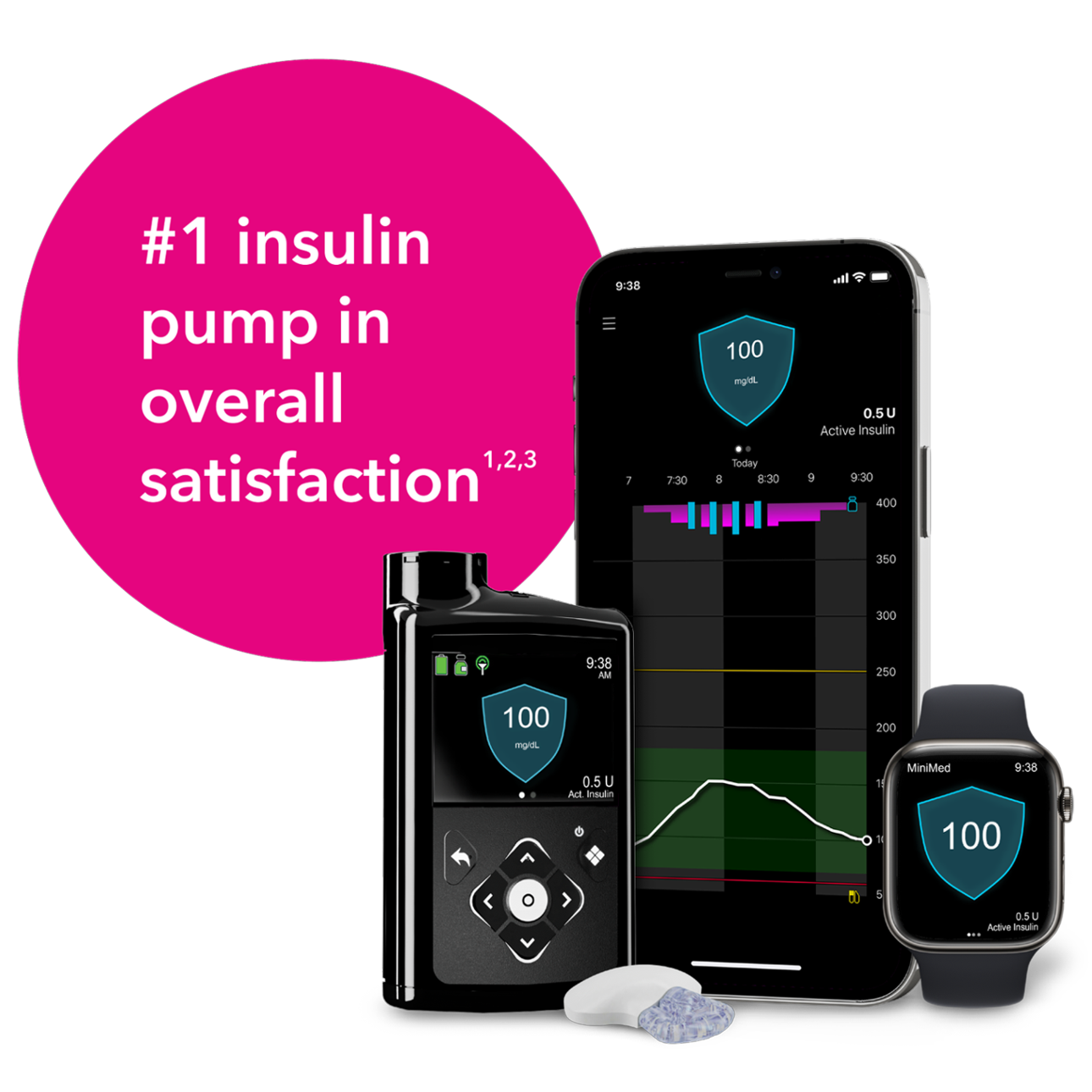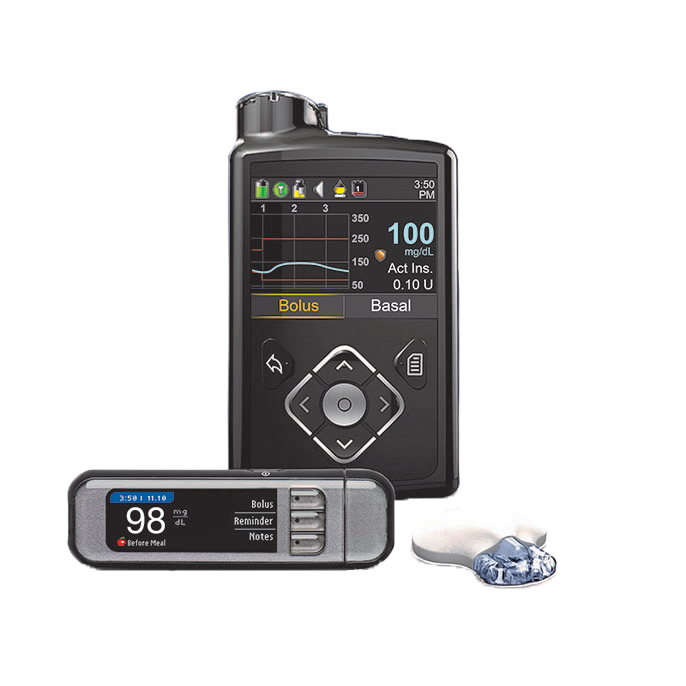Insulin pump systems
See device options below on your individual needs.
See device options below on your individual needs.
Designed for real life
Price varies
pending insurance
Learn more
Designed for real life
Price Varies
pending insurance
Learn moreFor type 1 diabetes
Meal Detection™ technology*
Auto corrections
SmartGuard™ technology
Guardian™ 4 Sensor
No fingersticks with SmartGuard™ technology∑
Flexible automated targets
100, 110, 120 mg/dL
Software updates
MiniMed™ Mobile app
CareLink™ Connect app
For ages
Price Varies
pending insurance
Learn moreGet better glucose control
Price varies
pending insurance
Learn more
Get better glucose control
Price Varies
pending insurance
Learn moreFor people with diabetes
Meal Detection™ technology*
SmartGuard™ Auto Mode
Guardian™ Sensor 3
Flexible automated targets
Software updates
MiniMed™ Mobile app
CareLink™ Connect app
For ages
Price Varies
pending insurance
Learn more* Taking a bolus 15-20 minutes before a meal helps to keep blood sugar levels under control after eating.
∑ Fingersticks required in manual mode & to enter SmartGuard™. If symptoms don’t match alerts & readings, use a fingerstick. Refer to the user guide. Pivotal trial participants spend avg of > 93% in SmartGuard™
MiniMed™ 780G System is for type 1 ages 7 and over. Prescription required.
WARNING: Do not use the SmartGuard™ feature for people who require less than 8 units or more than 250 units of insulin/day.
More details.
MiniMed™ 630G system is approved for ages 14 and up with Guardian™ Sensor 3. Prescription required.
WARNING: Do not use the Suspend on low feature to prevent or treat low blood glucose.
More details.

ACCU-CHEK and related marks are trademarks of Roche.
©2025 Medtronic. MiniMed and MiniMed logo are trademarks of Medtronic MiniMed, Inc.™* Third-party brands are trademarks of their respective owners. All other brands are trademarks of a Medtronic company.
Please Try Again Later.
